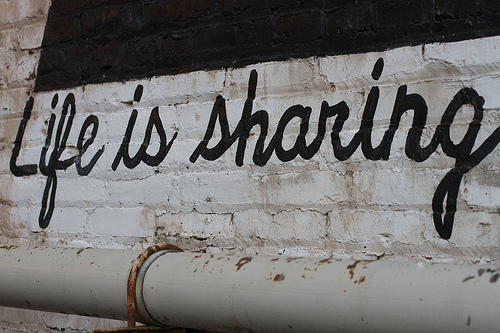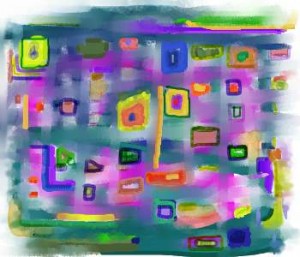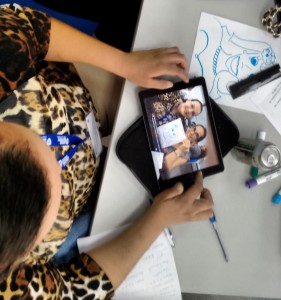Edit: for the whole series… Part 2, Part 3, Part 4 , Part 5 and Part 6…
Life is always full of surprises and just under two months ago my old pal and colleague, Brad Beach rang me up to wonder if I’d be game to come down under as part of an International Specialised Skills Institute Fellowship, and be hosted by his new working home, Chisholm Institute TAFE. You know, it is not only easy to say yes to Brad, but I always know it will be a fun adventure. So for the next few blog posts I’ll be documenting what I’m doing, where I’m going, who I’m hanging out with, and most importantly, what I’m eating. No, only kidding. What I’m LEARNING!
This first entry is mostly for context setting!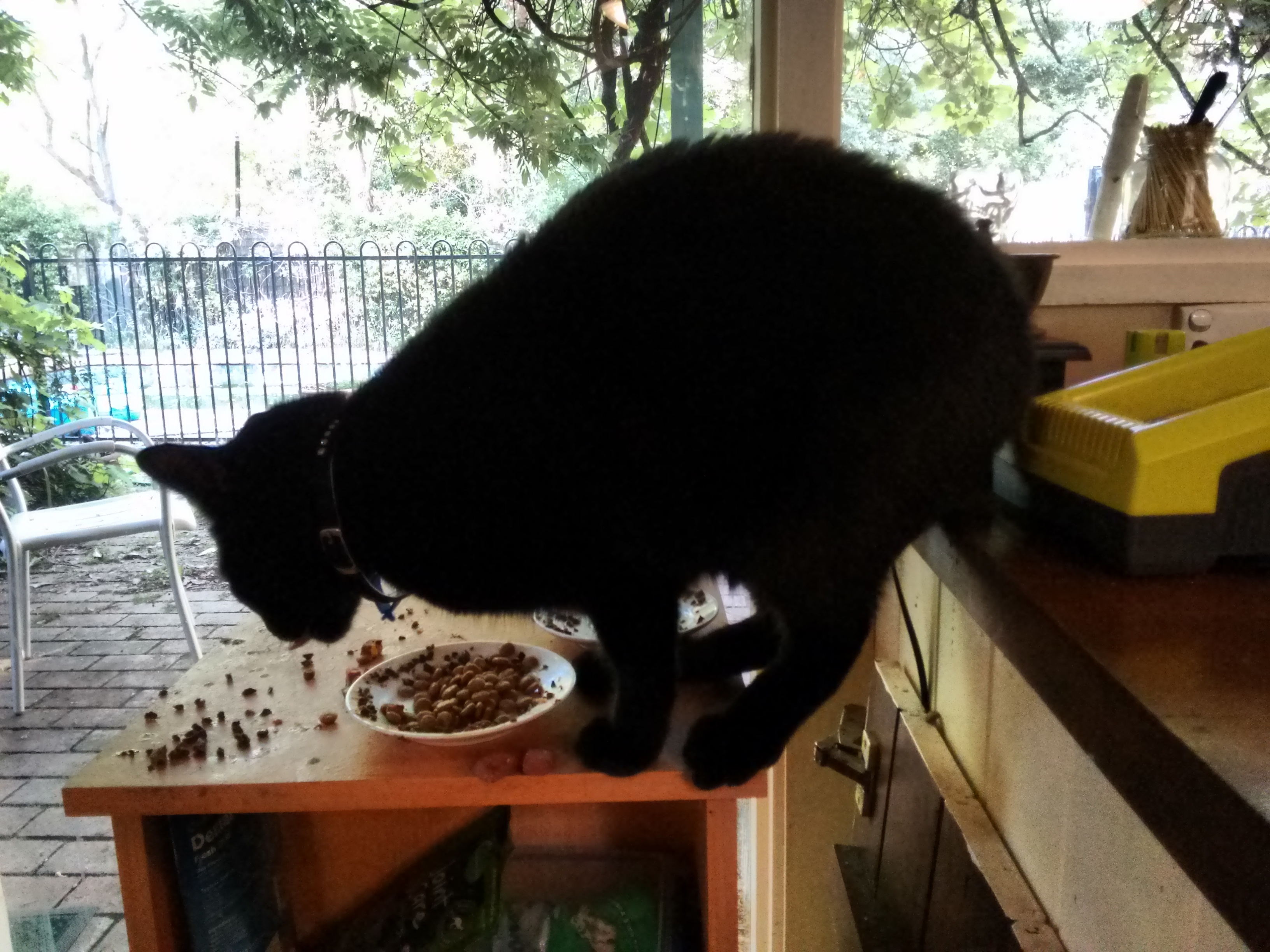
After facilitating for the Language Learning Flagship in Honolulu last week I hopped on two planes and headed to Melbourne arriving Sunday night at 10:30 pm to be graciously picked up by Patricia Rogers, my evaluation guru, founder of BetterEvaluation and friend from RMIT. Patricia had just returned from one trip and was about to head out Monday morning, but we were able to have a conversation about our lives and Better Evaluation over a dram of whiskey in the late evening and over coffee in the morning before she was off to the AEA conference in Chicago. I neglected to get a shot of Patricia, but I was quite taken by her counter balancing cat. I think there was a metaphor to start off the trip – keep balancing! (And keep eating, it seems.)
You know, friendship networks are amazing. Patricia’s son kindly drove me into Melbourne center. I parked my bags with Arthur Shelley of Organizational Zoo fame. Arthur and his wife Joy was hosting me at their home and Arthur organized a chance for me to do a Liberating Structures session for theKMLF (knowledge Management Leadership Forum) community on Tuesday. More on that in a separate post.
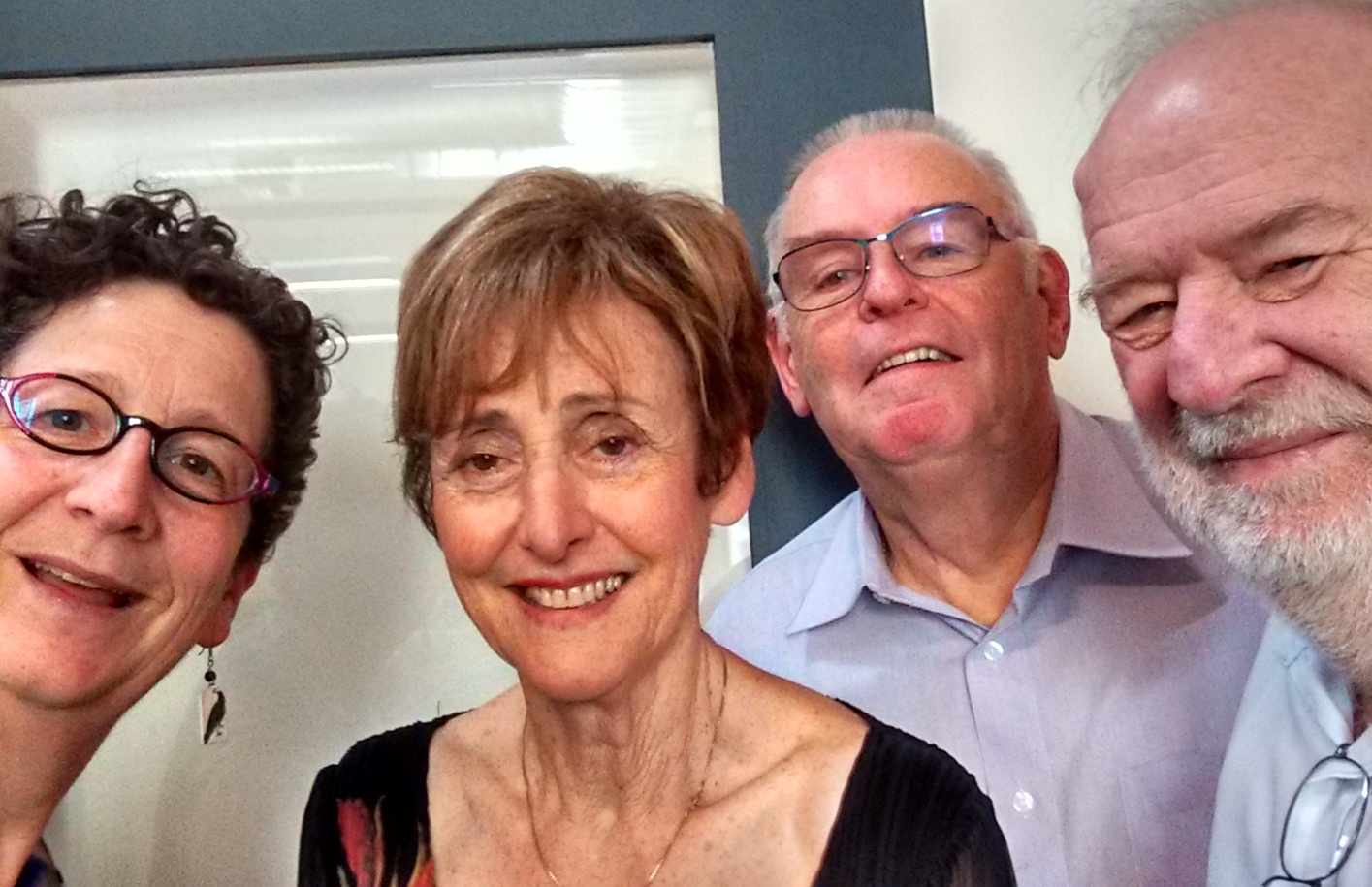 My first stop was lunch with Bella Irlicht, AM, of the ISS. I got to meet the dynamic staff trio of Bella, Ken Greenhill and Paul Sumner. As we discussed what kind of report they wanted, I mentioned I was thinking about blogging the trip, including pictures and videos. So we took a selfie right on the spot.
My first stop was lunch with Bella Irlicht, AM, of the ISS. I got to meet the dynamic staff trio of Bella, Ken Greenhill and Paul Sumner. As we discussed what kind of report they wanted, I mentioned I was thinking about blogging the trip, including pictures and videos. So we took a selfie right on the spot.
I did not know a lot about the ISS prior to my arrival, and over a delicious lunch of a fig and ricotta salad (see, I am obsessed with food) we had a chance to get to know each other (both grandmothers) and Bella filled me in on the history and work of the Institute. Being half Italian, it was really interesting to learn that the start of the Institute (1990 by Sir James Gobbo, AC, CVO), which is hosted by the Italian Cultural Center, came from the wave of Italian craftspeople who came to Australia post World War 2 and how Australians could learn from these centuries deep communities overseas, 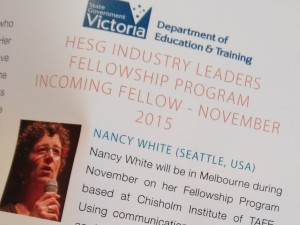 building internal skills here in Australia.
building internal skills here in Australia.
I was brought in on the “reverse” program where fellows come in to share knowledge in Australia. My particular fellowship is the HESG Industry Leaders Fellowship Program sponsored by the Victoria Department of Educating and Training and hosted, as I noted, by Chisholm. The plan was for me to work with teachers across the various Chisholm campuses, along with folks from Community Learning and eWorks. Of course, I wove in a few more opportunities as you will see.
After lunch and a quick gelato, because Melbourne’s Italian section is superb, I headed back to the business school at RMIT to meet up with Arthur. We had met on my previous trips down under, but this was the first time we’d have time to really chat and learn from each other.
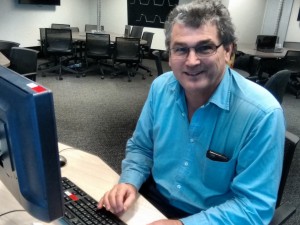 I was able to sit in and observe Arthur at work teaching at the Business school on organizational leadership to leaders from Vietnam. It was really useful to see the more subtle parts of his work with the Organizational Zoo cards, and how he negotiated meaning of the archetypes across cultures. I’ve been thinking a lot about how different methods work across diversity (particularly Liberating Structures) and this gave me a bit more insight about how to lightly raise the issues without letting the cultural lessons overshadow the intent of the exercise or process. I also continue to be interested in the use of cards for learning and other processes. I like the kinesthetic and visual aspects.
I was able to sit in and observe Arthur at work teaching at the Business school on organizational leadership to leaders from Vietnam. It was really useful to see the more subtle parts of his work with the Organizational Zoo cards, and how he negotiated meaning of the archetypes across cultures. I’ve been thinking a lot about how different methods work across diversity (particularly Liberating Structures) and this gave me a bit more insight about how to lightly raise the issues without letting the cultural lessons overshadow the intent of the exercise or process. I also continue to be interested in the use of cards for learning and other processes. I like the kinesthetic and visual aspects.
In the evening Arthur and I chatted nonstop. Like, as they say here down under, a house on fire. I have arrived at the conclusion that we are very kindred spirits. One thought I had right off is to introduce Arthur to some of the Chisholm folks as there is a strong element of leadership in teaching and learning.

